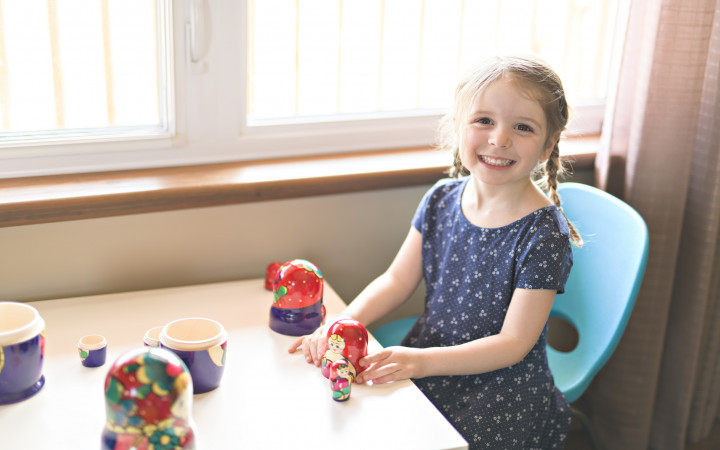Today’s Wonder of the Day was inspired by Rylie . Rylie Wonders, “What is the history of the Russian Matryoshka doll?” Thanks for WONDERing with us, Rylie !
Do you remember learning to count? Did you count the clouds in the sky? How about the buttons on your shirt? Did you give a number to each of your fingers and toes? People learn to count in many ways. A long time ago, Russian children learned to count with Russian nesting dolls, also known as matryoshkas.
You’ve probably seen Russian nesting dolls before. They’re dolls that hide inside each other. That’s where the name comes from — each one “nests” inside a larger doll. Most nesting dolls contain three to twelve dolls. However, some sets are much larger. The largest set in history had 1,800 dolls!
Today, nesting dolls are a symbol of Russia. However, they didn't start there. Nesting dolls came from Asia, where Chinese and Japanese artists began making them in the 1700s. In 1896, a Japanese artist brought nesting dolls to an art exhibit in Russia. Russian artists were inspired by the Japanese nesting dolls and began making their own versions.
Nesting dolls quickly became popular across Russia. At that time, toys that helped children learn were in high demand. Many parents bought nesting dolls to help their children learn to count. They also helped teach children about changes in size and shape. In no time, nesting dolls became a Russian staple.
In a set of Russian nesting dolls, all the pieces look similar, but they are not always identical. Parts of the dolls change, such as facial expressions, clothing, and activities. For instance, you might open one smiling doll to find the next one frowning. A doll with orchids on her dress might contain another with lilies. The largest, or “mother,” doll may hold a broom while the smallest holds a bottle. Sometimes, these changes have deeper meanings. For example, flowers on nesting dolls often stand for different parts of Russia. Other times, the changes are just artistic choices.
Russian nesting dolls have changed over time. Traditionally, they looked like women in aprons and bonnets. Today’s nesting dolls come in all shapes and sizes. Sometimes they look like pets or characters from movies or TV shows. Others look like politicians. One popular doll set begins with Russia’s current president, Vladimir Putin. As you open each doll, it moves back in time through the country’s leaders. Imagine starting with Donald Trump and opening doll after doll until you end up with George Washington!
Today, nesting dolls show up in popular culture. They’re common symbols in books, movies, and TV shows. They’ve even influenced video games. A popular game called “Stacking” challenges players to solve difficult puzzles as nesting dolls. Beginning as the smallest doll, the player stacks into larger dolls as they play against the game’s villain. Can you complete the set? It’s harder than it sounds!
Custom nesting dolls are a lot of fun to make! How would you like a set of nesting dolls that look like your family members? How about your pets? Maybe you could make a set that looks like your classmates! The possibilities are endless.
Standards: ELA.RH6-8.2, ELA.RH.6-8.10, CCRA.R.1, CCRA.R.2, CCRA.R.3, CCRA.R.10, CCRA.W.2, CCRA.SL.1, CCRA.SL.4




